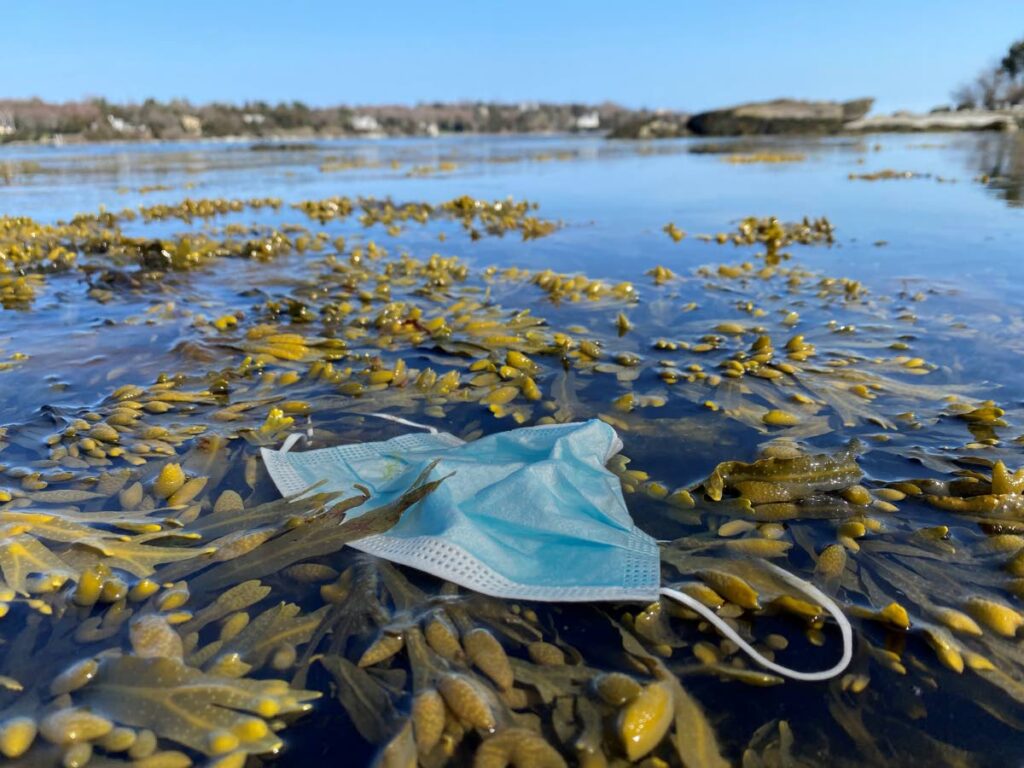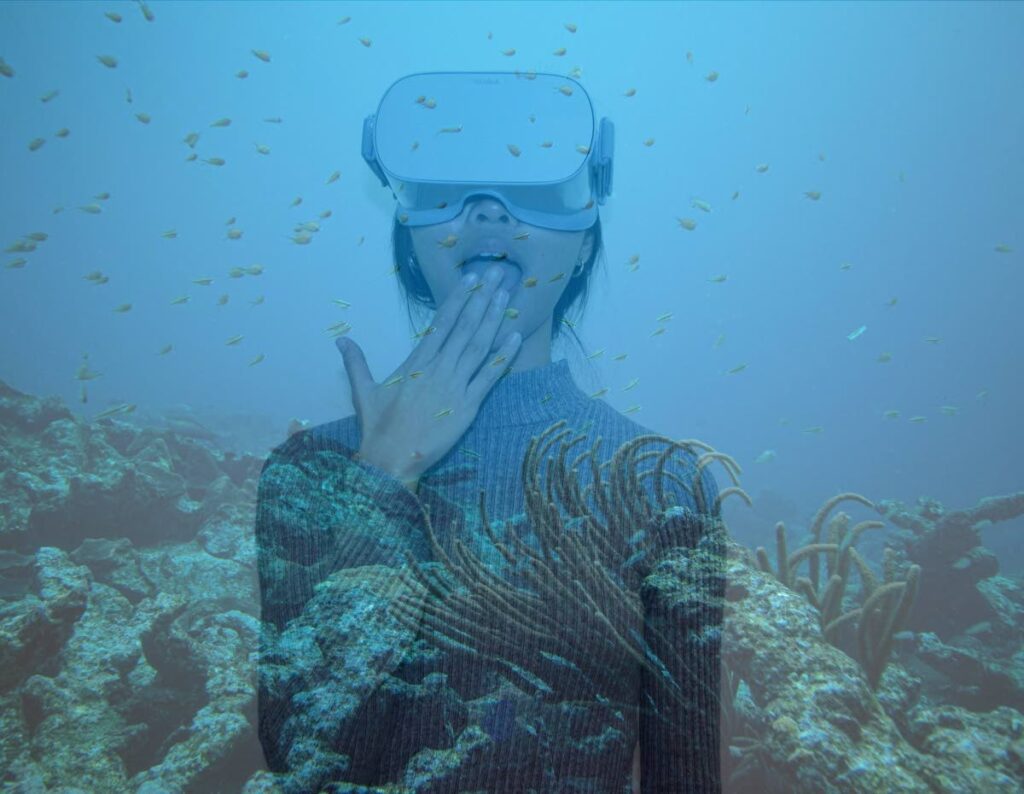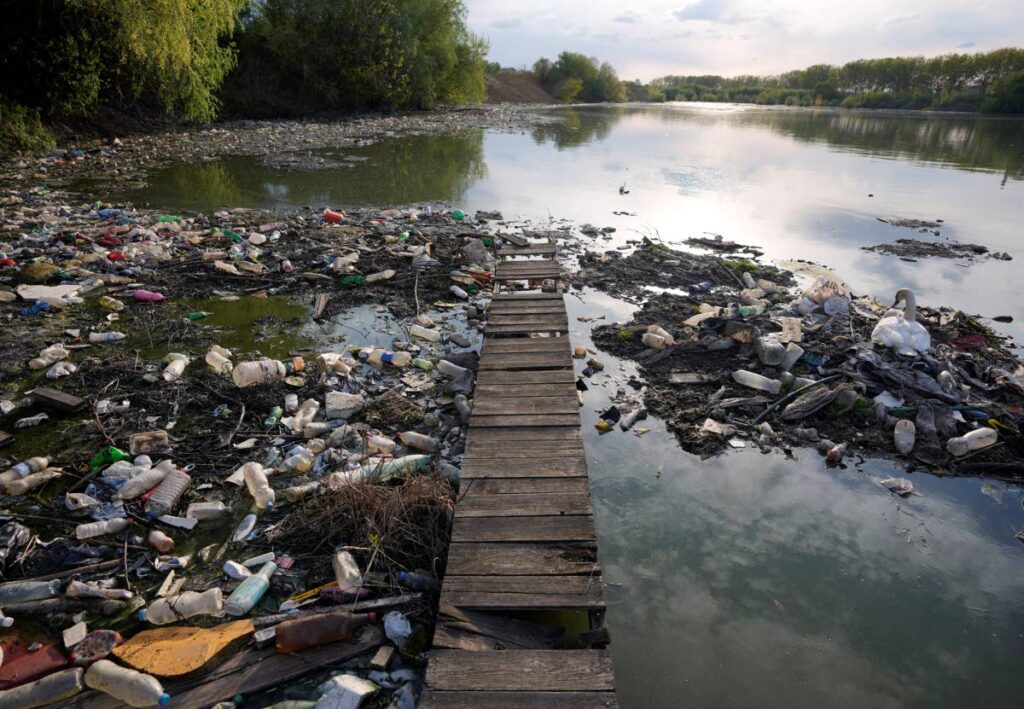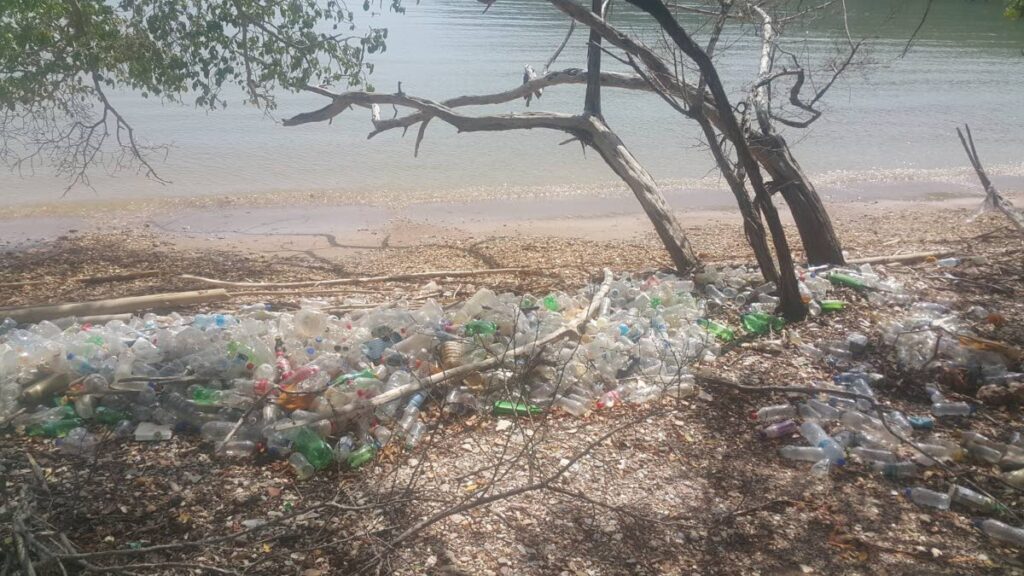Using virtual reality to #BeatPlasticPollution

LORRAINE BARROW
The idyllic vacation package often brings to mind a stretch of a pristine, sandy beach set against crystal-clear water, framed with the sun’s rays piercing through the fronds of swaying palm trees. Perhaps a boat on the horizon can be added to the imagination.
This is an ideal setting for that perfect beach vacation! However, this is hardly the reality. Beaches and coastal areas, once trash-free and unspoilt, have given way to carelessly discarded pieces of rubbish with tides of marine plastic debris washing up onto shorelines – a problem that has become an environmental challenge of global concern. Several empirical studies have shown that marine debris, which mainly comprises 80 per cent plastic pollution in the form of macro- and microplastics, can be retraced to human activities on land. Adversely affecting freshwater and marine ecosystems, plastic pollution poses a serious threat to human well-being, especially when marine life ingests microplastics that subsequently enter and move through the food chain.

As World Environment Day is observed globally on June 5 each year, the campaign message could not be more apt. As this year’s theme calls for global solutions to address plastic pollution under the campaign #BeatPlasticPollution, this article briefly focuses on leveraging virtual reality (VR) technology to raise awareness and increase understanding.
Exponential growth of plastics production
According to a 2021 United Nations Environment Programme (UNEP) report, global production of plastic has increased exponentially within the last ten years, amounting to some 400 million tonnes produced each year. Fifty per cent of that plastic production represents single-use plastic (SUP) materials that would be used once and then discarded. In a 2022 Ocean Conservancy report, discarded single-use plastics worsened during the covid19 pandemic with the increased use of personal protective equipment.

Established in 1986 to combat the growing scourge of plastics, Ocean Conservancy – an international non-profit environmental advocacy group – organises, inter alia, global awareness campaigns such as the annual International Coastal Clean-up (ICC) Day, which aims to continue raising awareness on the escalating plastics pollution crisis through action – dedicated beach and coastal clean-up activities to reduce plastic pollution. Since its inception in 1986, the ICC has collected over 345 million pounds of marine trash from more than 150 countries; one would think that 37 years later, beaches and coastal areas across the world would be all but plastics-free. Conversely, marine plastics pollution has increased exponentially.
Increased plastics pollution
According to a 2019 scientific paper written by Clare Ostle and Richard C Thompson, there has been a significant increase in ocean plastics from 1957 to 2020 which has been corroborated by key findings presented in the 2019 OECD Global Plastics Outlook Report. The report states that in 2010, 4.8 million metric tonnes of plastic waste entered the ocean which more than doubled to 12.7 million metric tonnes in 2019.

A recent report published by the Pew Charitable Trusts in 2020, projected plastic pollution entering our oceans to increase to 29 million metric tonne by 2040, attributed in part mainly by thousands of tons of plastics generated during the covid19 pandemic. At home, plastic debris is now ubiquitous in almost every beach in Trinidad and Tobago. Last year, a little under 2,800 pounds of plastic were collected by volunteers of the Ministry of Planning and Development during a beach clean-up at the Foreshore Highway in Port of Spain, and on International Coastal Clean-up Day, 2,720 pounds of plastics were collected at the same site six months later.
Dubbed the "Plastics Age" in some quarters and further parodied in the statement that "marine plastics will outnumber fish in the seas by 2050," the problem has reached epic proportions. It poses a serious threat to our health, livelihoods, and the marine ecosystems upon which we depend for food and medicine. While there has been increased awareness, the plastic pollution continues, seemingly unabated.
How to stop tonnes of marine plastics from reaching waterways and oceans?
While various strategies and activities (beach clean-ups, ocean literacy documentaries and school outreach programmes, regional workshops and seminars, tool kits, ban on SUPs, use of alternative materials and their benefits) are being employed to #beatPlasticsPollution, one way that can be considered to be effective with the younger generations is the use of virtual reality (VR).
The public perceives the ocean as what they can see from the shore, an endless resource, or an expanse of water so vast there is "no end in sight." Many people are unaware of how their daily actions – such as the regular use and indiscriminate disposal of SUPs – can adversely impact the health of the ocean and the many resources upon which all humanity depends. For example, if one plastic bottle were to be discarded into one’s backyard, which inevitably ends up in the sea, that one plastic bottle flowing out into the vast blue realm of the ocean would be perceived as harmless. The reality is, that discarded plastic bottle would not disintegrate but remain floating, joining other discarded plastics, perhaps broken into microplastics after a prolonged period.
In today’s technologically advanced age, VR can be viewed as an approach to foster public awareness, broaden understanding and knowledge, and perhaps, establish a connection to the global issue of plastic pollution.

- Courtesy Lorraine Barrow
Defined by the Iberdrola Group as "a computer-generated environment using scenes and objects that appear to be real," VR enables viewers/users to feel immersed in their surroundings with the use of a VR headset or goggles. Using 360-degree videos, this technology helps viewers better understand how coastal and marine environments are adversely affected by plastic pollution. How? Reading this article without images or illustrations about marine plastics pollution may evoke an unenthusiastic reaction; however, viewing similar content using VR 360-degree videos may elicit a response of consternation or sentiment of despair, as visuals hold more appeal than text.
VR has the capability of placing individuals in real-life scenarios – immersing viewers in real-life polluted environments, taking them on journeys through and across polluted beaches and rivers "choking" on plastics; plunging viewers underwater to view the declining health of coral reefs caused by plastic pollution; enabling viewers to watch with dismay as marine turtles struggle to break free from tangled plastic fishing nets; or, even leading viewers onto the ocean’s surface to see the sheer size and depth of marine garbage patches. While the technology is likely to inspire viewers into action, it does not verify that it can challenge them to rethink their choices to lead ocean-sustainable lifestyles.
The technology encompasses several 90-degree and/or 180-degree videos which capture almost everything around, above, and below in the immediate environment with the use of a camera equipped with forward and rear-facing lenses. This footage is then stitched together to produce a 360-degree video that is usually viewed with VR goggles or a headset and activated with head movements.
The internet is replete with VR 360-degree videos on plastics pollution and can be viewed with most android smartphone and iPhones, as long as these can fit into the VR headset. Used profusely in the gaming industry, VR is also being used to inform and hopefully effect change as there are over three billion active video gamers globally, based on a 2021 Statista report. VR games such as Bleached Az engage players to meet the goal of slashing as many plastics and trawler nets to protect coral reefs in the game.
Awareness campaigns may require using technological software and gadgets which are used by the next generation and whose lives will be affected the most in decades to come.
Advisory in its mandate to the TT Government, the IMA continues to support the reduction of plastics pollution through its applied and scientific research and ongoing monitoring of our twin-island’s marine and coastal environments. In 2019, the IMA hosted an interactive marine environmental exhibition at Nalis themed Beyond the Blue. Targeting secondary-level school students and members of the public, a little under 400 students attended the exhibition and used the VR headset to explore the splendour of coral reefs in Tobago while viewing diseased corals caused by pollution. Eighty-three per cent of the students found the technology to be exhilarating and felt more aware of how man’s indiscriminate actions can impact the marine environment.
The IMA is the Regional Activity Centre (RAC) for the Cartagena Convention with responsibility to address land-based sources of pollution. This responsibility aptly aligns with Societal Outcome No 1-1 of the United Nations Decade of Ocean Science for Sustainable Development 2021-2030, which states, "a clean ocean where sources of pollution are identified and reduced or removed." The IMA also plays a pivotal role in developing the Integrated Coastal Zone (ICZM) policy, which addresses, inter alia, pollution controls and waste management with minimal impact on human and coastal ecosystems.
So, when next you go on that idyllic beach getaway and your eyes stray to heaps of marine plastics or debris strewn across the sand, you have two options from which you can choose – do nothing using the "business-as-usual" approach, or, do your part in refraining from the use of SUPs, implement the five Rs of refuse, reduce, reuse, recycle, and repurpose and spread the word!
Lorraine Barrow is a librarian at the Institute of Marine Affairs


Comments
"Using virtual reality to #BeatPlasticPollution"